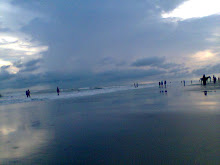
Debhata Upazila (satkhira district) with an area of 176.33 sq km, is bounded by satkhira sadar upazila on the north, kaliganj (Satkhira) upazila on the south, Kaliganj, assasuni and Satkhira Sadar upazilas on the east, West Bengal of India on the west. Main rivers are ichamati, Kholpoya, Labangabati.
Debhata (Town) consists of one mouza. It has an area of 3.48 sq km. The town has a population of 2492; male 51.52%, female 48.48%. Literacy rate among the town people is 51.7%. The town has one dakbungalow.
Administration Debhata thana, now an upazila, was established in 1919. It consists of 5 union parishads, 58 mouzas and 116 villages.
Marks of the War of Liberation Mass grave 1.
Population 99068; male 51.11%, female 48.89%; Muslim 76.53%, Hindu 23.45% and others 0.02%.
Religious institutions Mosque 110, temple 10.
Literacy and educational institutions Average literacy 30.6%; male 40% and female 21.2%. Educational institutions: college 3, high school 9, madrasa 10, government primary school 35, non-government primary school 21. Noted educational institutions: Khan Bahadur Ahsanullah College (1995), Town Shreepur Sharat Chandra High School (1916), Parulia SS High School (1976), Debhata BBMP High School (1919).
Cultural organisations Club 23, public library 1, cinema hall 2, literary society 1.
Main occupations Agriculture 26.58%, pisciculture 6.2%, agricultural labourer 29.84%, wage labourer 3.32%, commerce 18.87%, service 4.28%, fishing 1.48%, transport 2.64% and others 6.79%.
Land use Total cultivable land 20611 hectares, fallow land 2848 hectares; single crop 72.68%, double crop 20.99% and treble crop 6.33%; land under irrigation 3500 hectares.
Land control Among the peasants 11.95% are landless, 28.79% marginal, 43.73% small, 11.06% intermediate and 4.47% rich.
Value of land The market value of the land of the first grade is approximately 6000 Taka per 0.01 hectare.
Main crops Paddy, mustard seed, potato, patal, onion.
Extinct or nearly extinct crops Linseed, tobacco, jute, khesari, sola.
Main fruits Mango, litchi and coconut.
Fisheries, dairies, poultries Poultry 17, dairy 3 and shrimp 850.
Communication facilities Roads: pucca 18 km, semi pucca 28 km, mud road 286 km; waterways 19 nautical mile.
Traditional transport Palanquin, horse carriage and bullock cart. These means of transport are either extinct or nearly extinct.
Manufactories Ice factory 7, welding 8.
Cottage industries Goldsmith 37, blacksmith 18, potteries 35, wood work 104, bamboo work 48 and tailoring 102.
Hats, bazars and fairs Hats and bazars are 45, most noted of which are Parulia Hat and Sakhipur Bazar; fairs 20, most noted of which is Parulia Sashan Ghat Mela (on the occasion of the Kali Puja).
Main exports Shrimp, crab, leather and patal.
NGO activities Operationally important NGOs are brac, Dhaka Ahsania Mission, grameen bank and Ideal.
Health centres Upazila health complex 1, family planning centre 2, government clinic 2, private clinic 2. [Amarendra Nath Mridha]
Debhata (Town) consists of one mouza. It has an area of 3.48 sq km. The town has a population of 2492; male 51.52%, female 48.48%. Literacy rate among the town people is 51.7%. The town has one dakbungalow.
Administration Debhata thana, now an upazila, was established in 1919. It consists of 5 union parishads, 58 mouzas and 116 villages.
Marks of the War of Liberation Mass grave 1.
Population 99068; male 51.11%, female 48.89%; Muslim 76.53%, Hindu 23.45% and others 0.02%.
Religious institutions Mosque 110, temple 10.
Literacy and educational institutions Average literacy 30.6%; male 40% and female 21.2%. Educational institutions: college 3, high school 9, madrasa 10, government primary school 35, non-government primary school 21. Noted educational institutions: Khan Bahadur Ahsanullah College (1995), Town Shreepur Sharat Chandra High School (1916), Parulia SS High School (1976), Debhata BBMP High School (1919).
Cultural organisations Club 23, public library 1, cinema hall 2, literary society 1.
Main occupations Agriculture 26.58%, pisciculture 6.2%, agricultural labourer 29.84%, wage labourer 3.32%, commerce 18.87%, service 4.28%, fishing 1.48%, transport 2.64% and others 6.79%.
Land use Total cultivable land 20611 hectares, fallow land 2848 hectares; single crop 72.68%, double crop 20.99% and treble crop 6.33%; land under irrigation 3500 hectares.
Land control Among the peasants 11.95% are landless, 28.79% marginal, 43.73% small, 11.06% intermediate and 4.47% rich.
Value of land The market value of the land of the first grade is approximately 6000 Taka per 0.01 hectare.
Main crops Paddy, mustard seed, potato, patal, onion.
Extinct or nearly extinct crops Linseed, tobacco, jute, khesari, sola.
Main fruits Mango, litchi and coconut.
Fisheries, dairies, poultries Poultry 17, dairy 3 and shrimp 850.
Communication facilities Roads: pucca 18 km, semi pucca 28 km, mud road 286 km; waterways 19 nautical mile.
Traditional transport Palanquin, horse carriage and bullock cart. These means of transport are either extinct or nearly extinct.
Manufactories Ice factory 7, welding 8.
Cottage industries Goldsmith 37, blacksmith 18, potteries 35, wood work 104, bamboo work 48 and tailoring 102.
Hats, bazars and fairs Hats and bazars are 45, most noted of which are Parulia Hat and Sakhipur Bazar; fairs 20, most noted of which is Parulia Sashan Ghat Mela (on the occasion of the Kali Puja).
Main exports Shrimp, crab, leather and patal.
NGO activities Operationally important NGOs are brac, Dhaka Ahsania Mission, grameen bank and Ideal.
Health centres Upazila health complex 1, family planning centre 2, government clinic 2, private clinic 2. [Amarendra Nath Mridha]

No comments:
Post a Comment